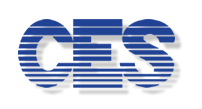El Niño, La Niña, dust storms in the Sahara… quite frankly, we don’t really understand all the weather lingo too well, but we DO know a bit about water chemistry. We also know that recently it has been either really sunny and hot, or stormy with monsoon levels of rain. Either of these conditions can cause elevated chemical consumption by themselves, but together they can cause exponential consumption, potentially costing you thousands a year. Read on….
The problem: Heavy rains dilute the cyanuric acid (CYA) levels in your pool, and it (aka stabillzer or conditioner) is a key chemical in protecting chlorine residual in your pool. CYA serves as “window tinting” for the chlorine molecule, and protects or “stabilizes” chlorine from UV destruction.
About cyanuric acid: In 1956 it was discovered that chlorine would stay in the water longer if CYA was added… about 4 to 8 times longer to be more exact. As an example, 10 PPM of stabilizer will protect about 1.5 PPM of chlorine, but any chlorine in excess of 1.5 PPM in the pool is unprotected and is subject to UV destruction at a rate of 90-95% in 2 hours. That’s your money going down the drain. Our rule of thumb in the 80’s was that 30 PPM would cut your chlorination costs in half.
In general it takes about 8-10 times the CYA to effectively protect free chlorine… so it takes 25 PPM to protect 3.0 chlorine (give or take), and so on. This is widely misunderstood, as many felt that holding ANY level of CYA gave them a license to hold their pools at elevated chlorine levels, but we know that the aforementioned “excess chlorine” (which is not protected) is being stripped out at a rapid rate.
How much to use?: How much stabilizer to use is a HOT topic which deserves some conversation.
While the 2016 Department of Health Code allows 100 PPM of stabilizer MAX in pools, and Zero in spas and indoor pools, best practice has traditionally been to maintain 20-30 PPM in normal condo and hotel pools, and 10-15 PPM in heavily used activity pools and water parks. Anything over 50 PPM is generally considered wasted as 100 PPM does not provide substantial protection over 25 PPM, and the minimal additional protection it DOES provide does not justify the additional cost.
stormcloud 2
It gets more complicated: With the new codes and studies that confirm CYA slows down the “rate” of disinfection to the point that treating for fecal accident WITH and WITHOUT CYA are very different indeed. This led to the updated CDC 2016 guidelines for shocking pools after fecal accidents which shows:
*Formed stool:
*2 PPM (chlorine) for 25 minutes (no CYA)
*2 PPM for 50 minutes (with CYA)
*Diarrheal stool:
*20 PPM for 12.75 Hours (no CYA)
With CYA… lower CYA to <15 PPM, then:
*20 PPM for 28 hours
*30 PPM for 18 hours, or
*40 PPM for 8.5 hours.
This means that if your pool is prone to fecal accidents, you may be best off keeping your CYA levels below 15 PPM, so that you won’t need to drain the pool before shocking. While you will use a BIT more chlorine at 15 PPM than you will at 20-30 PPM, the time savings are normally very appreciated by your patrons.
Oh yes… about the rain!: During times of heavy rainfall, your team needs to be more vigilant in testing and adjusting stabilizer levels. Most customers have found it better to use an accurate digital test kit like the Spin Disk, or Palintest tester as the standard “look for the dot” CYA tests don’t normally measure down to these low levels. They also seem to prefer using CES’s quick dissolve powdered CYA which is considerably easier to apply than waiting for the traditional granular CYA to dissolve…..
Plesae contact your CES rep for more information or with any questions on testing methods, stabilizer, etc. Our goal to assist you in maintaining moderate chlorination cost in the long haul.




